#was originally meant in terms of quality
Note
what's your stance on separation of the art from the artist / creator when it comes to the artist / creator being of a questionable person?
Ohhh dear nuanced topics. Ok. Oof. Umm.
TLDR:
on a pure technical level: always possible and SHOULD always be done actually
if the creator isn’t riding off their art/their questionable things aren’t linked to the art: maybe stop giving it money but otherwise it’s cool.
If they ARE riding off their art: stop giving it money and publicly TALKING about it. Just vibe for yourself and maybe some friends, but otherwise keeping them relevant is giving them a platform, which enables them to hurt others
Also engaging with art without knowing an asshole made it doesn’t suddenly make you evil and I am not sure why people seem to think so or if that is actually a real thing and not just some myth people think happens
Regarding just the quality of a piece of art, on a pure technical level: always separate them. A person who does nice things can bake a cake that tastes like crap, but a piece of shit can also bake the most delicious food you’ve ever eaten. (That also goes for whenever someone tries to say they’re a nice person for donating to charities. Two actions can exist separately.)
It’s kinda weird how people always go "oh their stuff wasn’t as good as we thought anyways“ like. Bro. The stuff in question literally hasn’t changed stop pretending like some supernatural force travelled back in time to alter your memories.
Then situation 1: it’s made by a pos but their shitty actions/opinions aren’t reflected in their creation. The cake is perfectly normal and even tastes good, but the hand that made it happens to belong to ass.
In that case: grab your pirate hat and library cards, we’re going sailing and taking the treasure with us. Aka: Separate the art from the artist and the artist from the money. Just buy it second-hand or pirate it. Since the opinions/actions of the person aren’t connected to the art itself, the relevancy of the art doesn’t uphold their opinions on their platform.
Like. Watching a fnaf stream doesn’t somehow help in spreading right-wing hatespeak, because there’s nothing connected to fnaf that reflects the political opinions of the dude who made it. Liking fnaf won’t lead to you reading braindead rants on Twitter.
On the other hand you’ve got minecraft (or every broken-up band ever) where the dude stopped having any connections to it like a decade ago so heck yeah let’s go enjoy it, because the art has LITERALLY been separated from the artist
Situation 2: the piece of shit is actively using the platform they gained through their art to hurt others.
Aka pulling a Kanye Rowling. As long as their platform exists in any way, they WILL continue hurting people. That is simply the truth of the matter. No buts. It sucks, but that’s how it is.
It is not separate anymore, because they have inserted themselves into the art, and using it - directly or indirectly - as a mouthpiece.
Do not give money, and do not engage online. If you engage online, you’re giving a platform. Doesn’t mean you have to burn every cd or book or whatever you own. Just vibe for yourself. Not everything needs to be a fandom ffs.
Basically:
"I like Kanye‘s music“: totally cool, if you like the sound, you like the sound. There’s nothing more to it.
"I like his music and listen to the tracks I already bought/pirated it/listened to a cover/etc“: also cool, you’re just vibin by yourself. It’s not doing anything.
"I‘m paying for new tracks/watching his videos/telling others to check him out/etc“: unfortunately you’re keeping him relevant that way, giving others a reason to bring them to his platform where he can then go spout literal Nazi propaganda, because the dude IS one. Straight up. I know US-ians like to call everyone they mildly disagree with that but in this case it’s actually true. What are people doing actively supporting the dude.
That‘s my stance anyways. Prone to change if confronted with logical arguments, as any opinion or stance should, really, but I like to believe this is a decently thought-out and realistic stance to take as it is rn lol
#another anon ask#whatch this be the post that starts some drama#that’s gonna be the subject of a 2h long essay on YouTube in 5 years#anyways. I‘m pretty sure the term ^seperating art from the artist^#was originally meant in terms of quality#but idk
1 note
·
View note
Text
one of the things that makes the umineko cast work so well is that they're very tightly written in terms of how they parallel each other but also how they parallel yasu first and foremost and i've always felt like that's an approach sotsugou tried to replicate with the higurashi cast and satoko
#it's obviously not as competent as umineko and it'd be crazy to suggest this#but it's also unfair to pit them against each other in terms of quality when one is ~100h sound novel and the other is an anime#anyway the most obvious and interesting is satoko and rika being narrative foils#but besides that the takano focus in the last episode of gou is all about drawing parallels between her and satoko#it's satoko inheriting the takano role so this exists to emphasize how similar they truly are#there's oniakashi rena and wataakashi mion which are all about drawing parallels with satoko's character arc albeit in different ways#even teppei in tatariakashi isn't meant to be seen as a character as much as he's a symbol#there's so much nuance in terms of what teppei stands for in terms of being the fantasy of the father figure she wishes she could've had#but he's also a mirror of her 'worst' self#even hanyuu's focus in the beginning of kagurashi can be drawn back to satoko's motives#i think sotsugou makes the most sense when you parse it as being the satoko show before anything else#i think this is something the original does with rika too but it's also a little different#the original isn't as rika centric#even if she's the hidden protagonist and the true heart it's still an ensemble story#but sotsugou feels like it's a love letter for satoko in the same way umineko is one for beatrice#not that this means the other characters don't matter it's just that everything is kinda about them?#not sure if this makes sense but it does in my head and i can write so many words about all the parallels#gamo.txt
24 notes
·
View notes
Text
Why “Go Nuts, Show Nuts” Doesn’t Work in 2022
For those who don’t know or remember, Tumblr used to have a policy around porn that was literally “Go nuts, show nuts. Whatever.” That was memorable and hilarious, and for many people, Tumblr both hosted and helped with the discovery of a unique type of adult content.
In 2018, when Tumblr was owned by Verizon, they swung in the other direction and instituted an adult content ban that took out not only porn but also a ton of art and artists – including a ban on what must have been fun for a lawyer to write, female presenting nipples. This policy is currently still in place, though the Tumblr and Automattic teams are working to make it more open and common-sense, and the community labels launch is a first step toward that.
That said, no modern internet service in 2022 can have the rules that Tumblr did in 2007. I am personally extremely libertarian in terms of what consenting adults should be able to share, and I agree with “go nuts, show nuts” in principle, but the casually porn-friendly era of the early internet is currently impossible. Here’s why:
Credit card companies are anti-porn. You’ve probably heard how Pornhub can’t accept credit cards anymore. Or seen the new rules from Mastercard. Whatever crypto-utopia might come in the coming decades, today if you are blocked from banks, credit card processing, and financial services, you’re blocked from the modern economy. The vast majority of Automattic’s revenue comes from people buying our services and auto-renewing on credit cards, including the ads-free browsing upgrade that Tumblr recently launched. If we lost the ability to process credit cards, it wouldn’t just threaten Tumblr, but also the 2,000+ people in 97 countries that work at Automattic across all our products.
App stores, particularly Apple’s, are anti-porn. Tumblr started in 2007, the same year the iPhone was released. Originally, the iPhone didn’t have an App Store, and the speed of connectivity and quality of the screen meant that people didn’t use their smartphone very much and mostly interacted with Tumblr on the web, using desktop and laptop computers (really). Today 40% of our signups and 85% of our page views come from people on mobile apps, not on the web. Apple has its own rules for what’s allowed in their App Store, and the interpretation of those rules can vary depending on who is reviewing your app on any given day. Previous decisions on what’s allowed can be reversed any time you submit an app update, which we do several times a month. If Apple permanently banned Tumblr from the App Store, we’d probably have to shut the service down. If you want apps to allow more adult content, please lobby Apple. No one in the App Store has any effective power, even multi-hundred-billion companies like Facebook/Meta can be devastated when Apple changes its policies. Aside: Why do Twitter and Reddit get away with tons of super hardcore content? Ask Apple, because I don’t know. My guess is that Twitter and Reddit are too big for Apple to block so they decided to make an example out of Tumblr, which has “only” 102 million monthly visitors. Maybe Twitter gets blocked by Apple sometimes too but can’t talk about it because they’re a public company and it would scare investors.
There are lots of new rules around verifying consent and age in adult content. The rise of smartphones also means that everyone has a camera that can capture pictures and video at any time. Non-consensual sharing has grown exponentially and has been a huge problem on dedicated porn sites like Pornhub – and governments have rightly been expanding laws and regulations to make sure everyone being shown in online adult content is of legal age and has consented to the material being shared. Tumblr has no way to go back and identify the featured persons or the legality of every piece of adult content that was shared on the platform and taken down in 2018, nor does it have the resources or expertise to do that for new uploads.
Porn requires different service providers up and down the stack. In addition to a company primarily serving adult content not having access to normal financial services and being blocked by app stores, they also need specialized service providers – for example, for their bandwidth and network connections. Most traditional investors won’t fund primarily adult businesses, and may not even be allowed to by their LP agreements. (When Starbucks started selling alcohol at select stores, some investors were forced to sell their stock.)
If you wanted to start an adult social network in 2022, you’d need to be web-only on iOS and side load on Android, take payment in crypto, have a way to convert crypto to fiat for business operations without being blocked, do a ton of work in age and identity verification and compliance so you don’t go to jail, protect all of that identity information so you don’t dox your users, and make a ton of money. I estimate you’d need at least $7 million a year for every 1 million daily active users to support server storage and bandwidth (the GIFs and videos shared on Tumblr use a ton of both) in addition to hosting, moderation, compliance, and developer costs.
I do hope that a dedicated service or company is started that will replace what people used to get from porn on Tumblr. It may already exist and I don’t know about it. They’ll have an uphill battle under current regimes, and if you think that’s a bad thing please try to change the regimes. Don’t attack companies following legal and business realities as they exist.
22K notes
·
View notes
Text
Went to a panel about slash fanfic at a con. Moderator said, "Welcome to the panel about erotica." The words "slash" and "erotica" were used interchangeably throughout. Panel was great.
There was a Q&A at the end so I raised my hand and said these terms seemed conflated. Moderator explained she'd run this panel for 10 years and it started out being about slash but drifted into erotica and she never changed the name. (She also said she was glad I brought it up and would keep it in mind for the future of the panel.) The guy on the panel who writes original m/f erotica said that slash and what he writes are basically the same thing. I said I had no complaints about the name of the panel or the panelists, I was just curious about what slash meant to them, and whether slash by necessity had to include sex scenes to be considered slash.
Two panelists answered that slash was romance between men but usually had sex. Eventually one of them did make clear that slash didn't have to have sex but that it was what they wanted to read. Another panelist said that to them slash really just meant dude romance but people wouldn't read their fic unless there was sex so they felt they had to put sex scenes in.
Person came up to me after the panel. Said they felt I didn't get my question answered. Then they explained that since the 70s, 'slash' has been used to mean m slash m romance, meaning explicit and sexual. Then they said it sounded like what I wanted to ask about was shipping. They explained to me that shipping is just wanting the characters to be together but slash meant sex. They explained that since the invention of AO3, people had begun to use the ampersand to mean the fic had two characters who were friends and that the slash was used to denote ships, but even though that punctuation just meant romance, the word "slash" in the last twenty years had become synonymous with explicit fic. I explained I had been in fandom longer than twenty years and this was not necessarily my experience. They said, "Bye!"
Though they seemed confused as to whether what they personally defined as slash had been mainstream since the 70s or since the last twenty years (the person was 24), they were well-meaning. The panel was great. I'd recommend it to anyone, though I'm not stating the name of the con here because I don't want anyone involved to feel this is really a critique of the panel itself. The moderator in particular was superb.
I think that this conversation just brought up a whole lot of feelings for me. I think it bothers me that people still think that all fanfic is smutty, that all slash requires porn, and that all fic must have porn in order to be read. I am familiar with this conflation and feel perfectly fine going to a panel that I think is about slash fic and finding out it's about erotic lit, some of which is fanfic. After all, I like both, and I recognize that fandom mushes these things together and teasing them out into separate strands isn't something everyone--or possibly even most fans--have any interest in. I recognize that I am pedantic to a degree that most people find uninteresting.
I have a little bit more of a problem with the idea that slash is "basically the same" as het, but this was said by only one of the panelists. If your panel is actually about straight up erotica and not slash, then the problem is just the name of the panel.
What I found the most frustrating, however, is that whenever I have this conversation, I feel like the default assumption most of my interlocutors begin AND end with is this: smut is why we're here. And I just don't understand that. Away Childish Things has 44,800 kudos, and it has no smut in it. My next most kudosed fic has almost 15,000 kudos and tons of smut. My next most kudosed fic has almost 14,000 kudos and it doesn't even have a kiss.
I'm not talking about kudos to show off how many I have, or because I think kudos make a point about quality of a fic. They have nothing to do with quality. But they do have to do with popularity, and the truth is, sex doesn't sell. It's something else. It's not good writing. It's not a great plot. It's not in-character characterization. IT'S SOMETHING ELSE. What is it?
I've had people say to me, "Well, you're lettered; it works differently for you." DOES IT??? Maybe they meant that because enough people know me as fic author, people will read my fic anyway, but let me tell you, it's always been this way for me, long before my fic was really popular. The ones with smut did not get more praise and attention. The ones that PEOPLE LIKED got more praise and attention. Do people like fic that has smut in it more than fic without smut? Some of the time! Does there have to be smut for people to like it? NO.
Have I had people tell me they didn't want to read something I wrote because it didn't have smut? YES. But the point I'm trying to make is, there are people who want to read fic that doesn't have smut in it. THEY are your audience for the fic you want to write that doesn't have smut in it. Fic does not have to have smut to be fic; it doesn't have to have smut to be read.
I think part of the reason I get so upset about it is that slash as we know it today didn't just emerge because some people weren't getting to read smut and they wanted to. It emerged because women and queer people and other marginalized communities were not getting to see what they wanted to in mainstream media. They weren't getting sex scenes, but they also weren't getting queer content, they weren't getting stories about sensitive men that defied patriarchal stereotypes of male toxicity; they weren't getting stories about disabled folks and people of color and folks who are into kink and folks who have different lifestyles. To reduce fanfic to porn is to remove the rich history of why it exists and who it exists for.
I asked earlier what makes a fic popular, and to me, it's exactly this. It's when you read a thing and you feel, "this is really satisfying to my id in a way that I am not getting from mainstream media." And sometimes what is satisfying to your id is very horny anal sex. Other times what is satisfying to your id is Bucky Barnes getting a blanket and facing his trauma. Sometimes it's Harry Potter being trans. Sometimes it's Naruto and Sasuke getting to just hold hands as the sun sets. I have no idea who those two people are but boy howdy do I know they just fucking need to hold hands.
But the other reason I get so upset about it is I'm so fucking tired of reading a great fic that devolves into mediocre mechanical porn that is there due to the collective brainwashing that states that this is the ONLY reason ALL of us are here.
Discuss.
638 notes
·
View notes
Text
TMNTherapy Group: Welcome Leonardo!
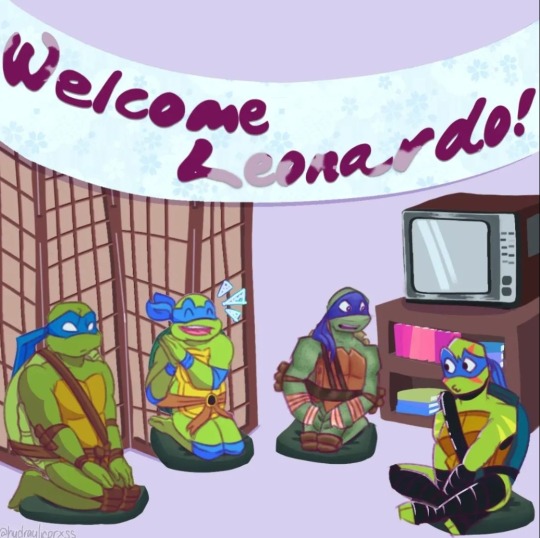
From ancient books of ninjitsu to comic books tucked neatly in the shelves, who better to confide in than the Leonardos? After all, the greatest honor a ninja could ever have is a nice cup of tea! Leonardo made sure that his comrades would feel right at home!
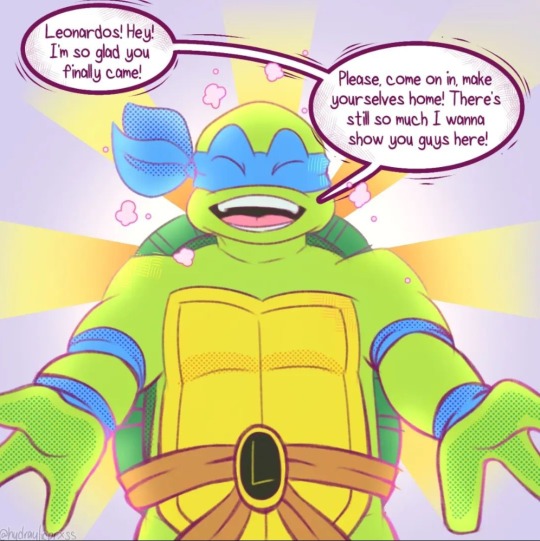

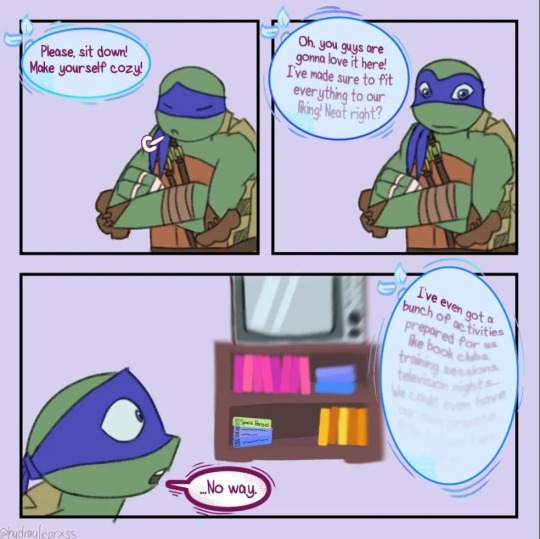
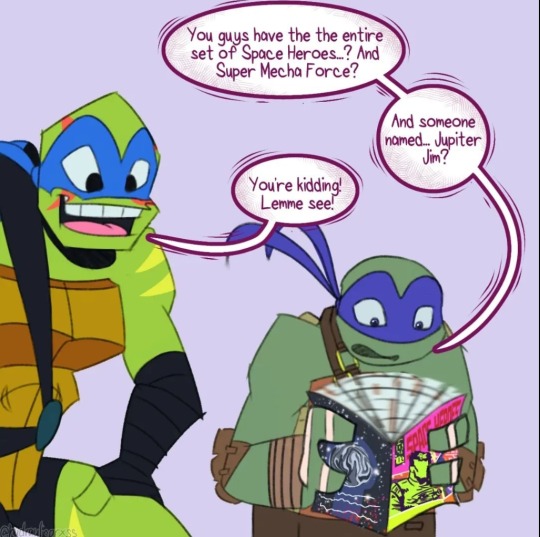
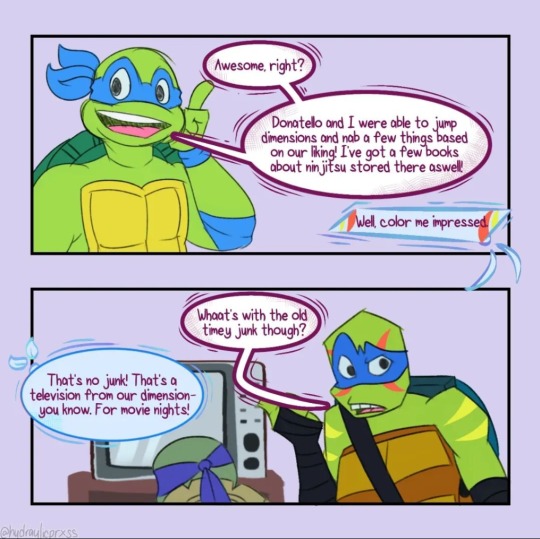
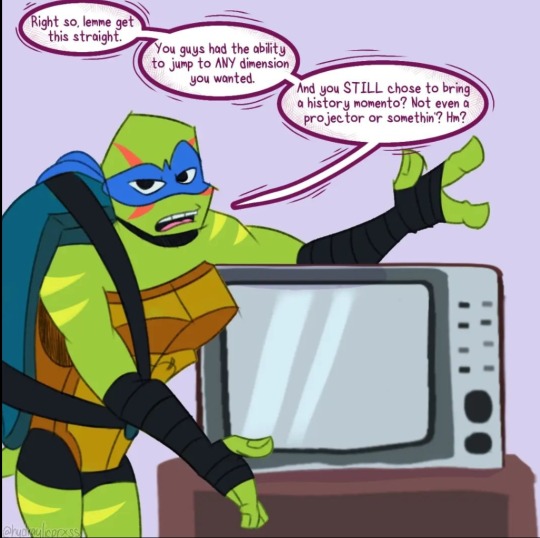
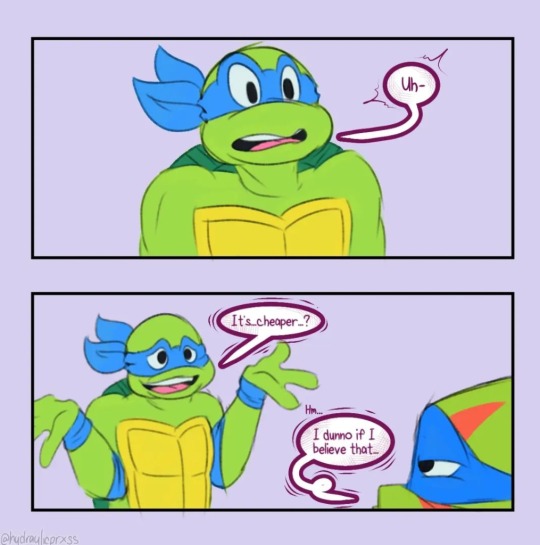
What is TMNTherapy Group about?
Teenage Mutant Ninja Therapy Group, or simply abbreviated to TMNTherapy Group or TMNT Group, is a fun little comic featuring your favorite turtles from all current running cartoon iterations joining together to, well... Get therapy! Or at least, that's what the turtles from the 1987 universe say. In OOC terms, yes, this is basically a crossover au.
Currently, the AU has 5 introduction comics (including this one), 1 filler comic and many more fun and angsty comics to come! Join the '87 verse turtles as they try their best to unite these 3 VERY different turtle iterations with each other! It's gonna be an... Interesting ride, to say the least. Stay tuned!
DO NOTE THAT :
This AU is strictly for fun and is only meant to explore the dynamic of each turtle iterations with each other! Nothing more, nothing less, just all 4 generations of turtles either venting to each other or having fun. None of this is meant to be reflective of real life scenarios, anything of the latter is completely unintentional.
You're gonna notice a watermark on most of these panels, and I can assure you that that is me; my old user! I unfortunately do not have the original files to these, nor do I have the time to redraw these to my current style. I'm pretty sure I stopped watermarking it with my old user after the Raph group intro :]
This was posted on Instagram during October 15th of last year!
Thought I should mention: The lineart quality for this AU is LARGELY inconsistent. I really just wanna have fun with this au so sometimes you're gonna see some clean and cool lineart, but mostly you're gonna have to deal with my sketchy lineart like in this comic haha
Seeing as Instagram is my main platform, you'll have to keep in mind that this format was made with the square format in mind. Stick with me here hehe :^))
Gonna start introducing Bonus Comics! These are just short disconnected comics that I usually include out of a whim. Just click on Keep Reading and you should see it! This will be the only time I'll mention these on the notes section.
<<< Previous: Teenage Mutant Ninja... Therapy Group?!
Next Up: TMNTherapy Group: Welcome Raphael! >>>
Bonus Comic:

#tmnt group au#teenage mutant ninja turtles#teenage mutant ninja turtles 1987#teenage mutant ninja turtles 2003#teenage mutant ninja turtles 2012#rise of the teenage mutant ninja turtles#teenage mutant ninja turtles 2018#tmnt#tmnt fanart#rottmnt#rottmnt fanart#tmnt comic#tmnt leonardo#tmnt leo#save rottmnt#save rise of the teenage mutant ninja turtles#unpause rise of the tmnt#unpause rottmnt
420 notes
·
View notes
Text
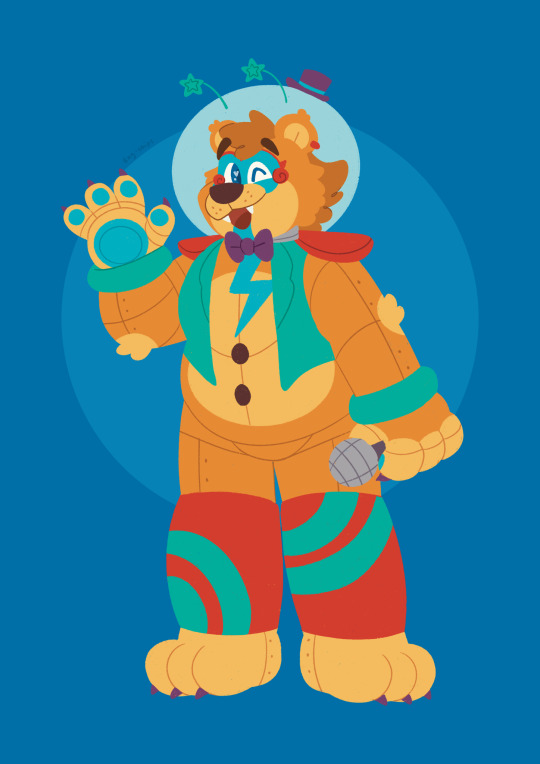
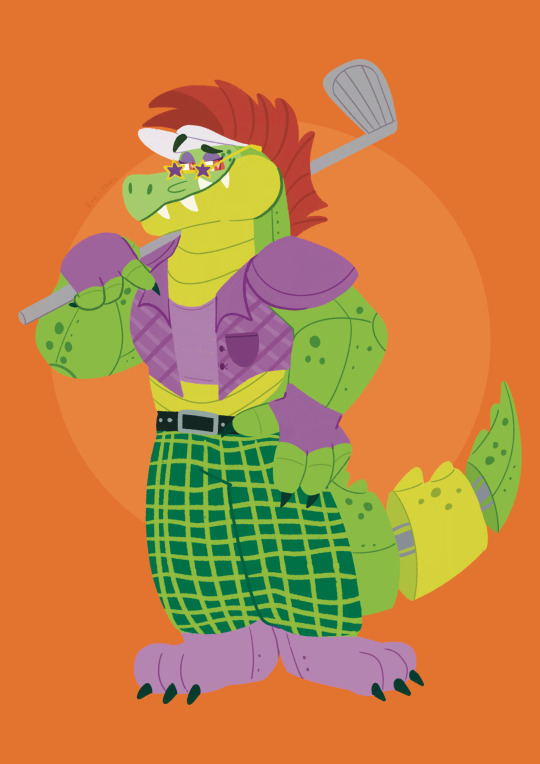
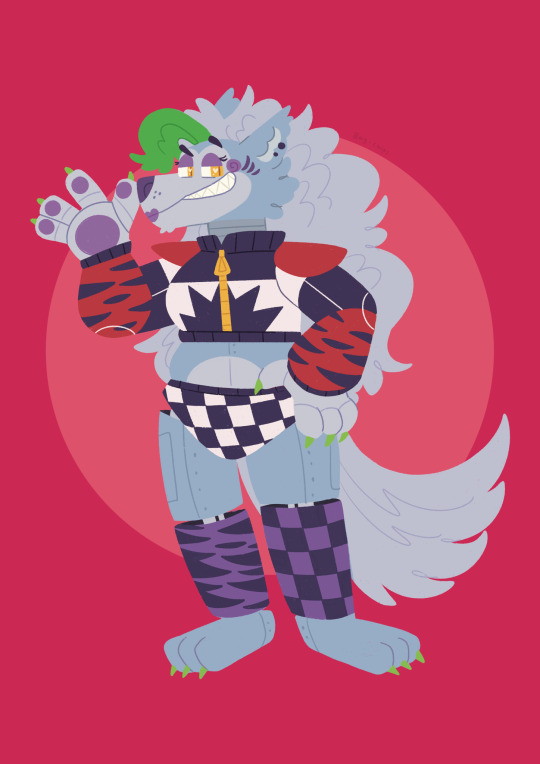
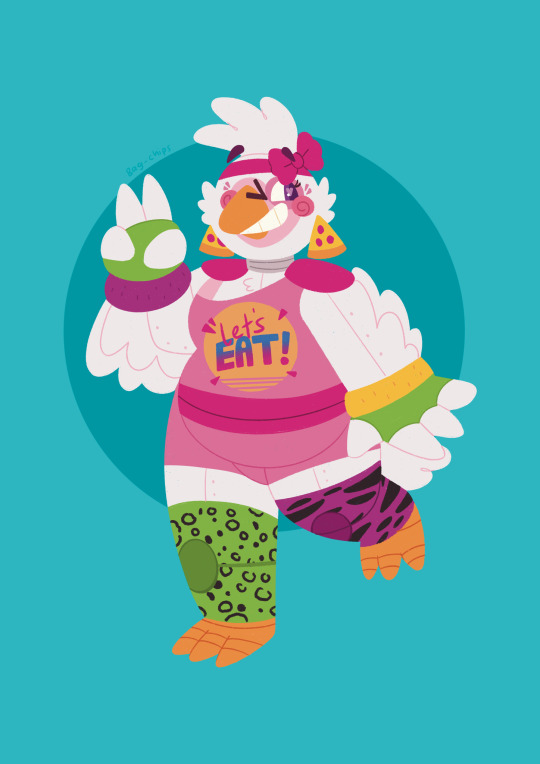
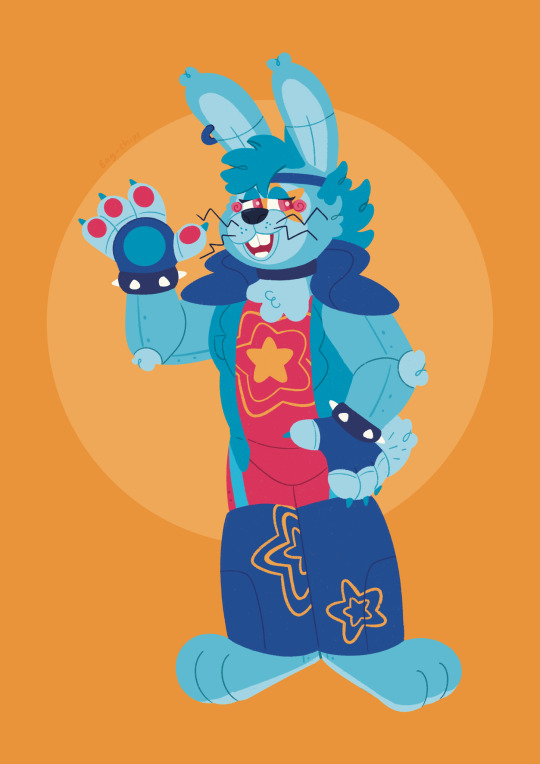
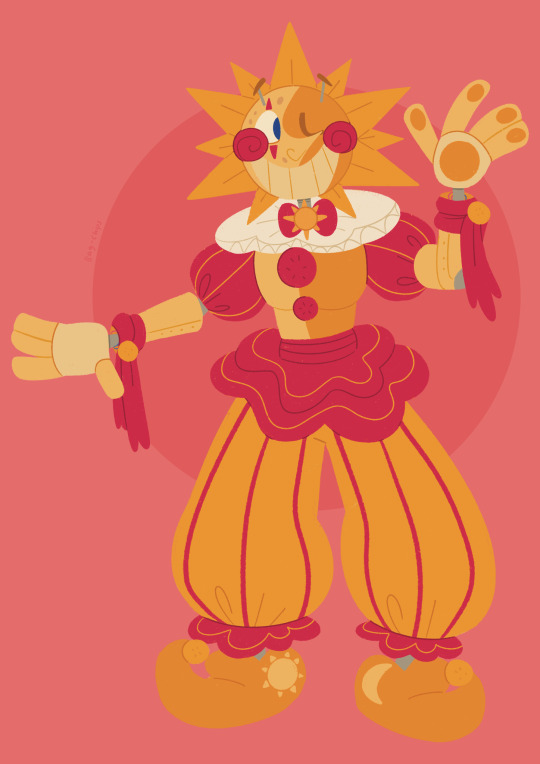
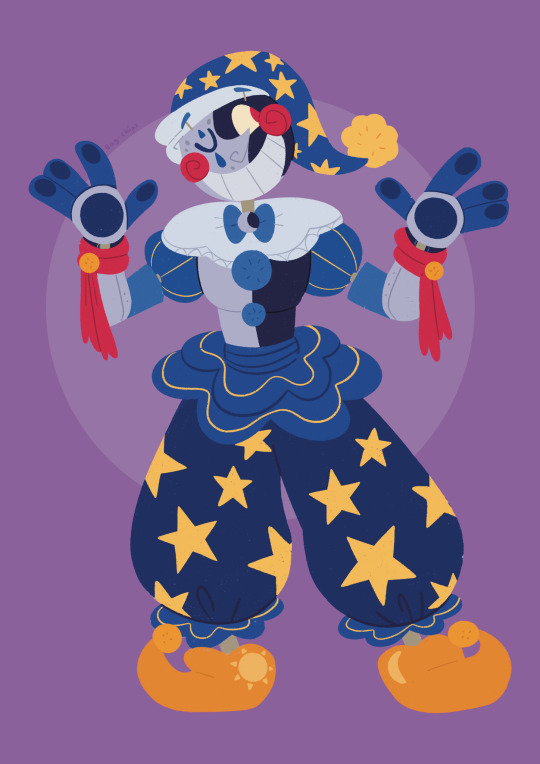
The Security Breach sillies!! Been meaning to post them for a while so here :) Headcanons under Keep Reading!
- The most advanced of all the generations, the animatronics use complex AI learning making them the most lifelike and sentient robots even outside of Fazbear entertainment. Each has unique personalities that can be moulded and changed by outside factors.
- The designs are made to capitalise on 80s nostalgia, taking inspirations from fashion of the time and utilising a vaporwave aesthetic. To hark back to previous generations, the animatronics are designed to look as though they have a face plate. The mechanical parts are also mostly hidden by complex joints to give them a more lifelike appearance.
- The Daycare Attendant is actually the most primitive in terms of technical ability and design. Fazbear Entertainment were able to find some of Henry and William’s scrapped designs, which were changed very little for the final product. Originally designed for the theatre, a last minute change meant that the animatronic would be used for the daycare. Although its ability to change its appearance is a marvel, it being based on design plans from the 70s means that they are prone to damages, needing almost constant maintenance. Even so, the Daycare Attendant is one of the most popular animatronics amongst customers.
- Glamrock Chica is the smallest animatronics of this generation. Fazbear Entertainment learnt very little since the early days, and once again programmed her to consume actual food. Like her 1st Gen counterpart, she is prone to having rotten food, maggots and cockroaches inside her. In this AU, she has the Valley Girl accent.
- Monty Gator is considered the strongest of all the animatronics. He is also one of the most aggressive. This is because he was originally programmed to be a ‘sore loser’ in Monty Golf, however a bug in the complex AI learning morphed this into excessive anger issues. He can easily knock down heavy displays and claw his way through gates. He was originally designed to be the mascot for the golfing area, however after the disappearance of Bonnie he was reprogrammed to become the new member of the band. His golfing motif still persists in his outfit.
- Roxanne Wolf’s outfit is inspired by racing gear, with her also acting as the mascot for the short lived hairdressing service. She is fully capable of cutting and styling her. In all their wisdom, Fazbear Entertainment programmed her to have anxiety and confidence issues to make her more relatable to teenagers. This has backfired massively, with Roxy’s AI learning exacerbating these qualities.
- Glamrock Freddy successfully won over fans after years of mixed opinions on the company’s mascot. With him being the mascot of Fazzer Blast, he has an alien motif in his outfit. Programmed to be best friends with Bonnie, the AI learning has developed this bond into something more. He misses him greatly.
- Glamrock Bonnie was laid back, playful and sassy. He was decommissioned by Monty. However, Monty was taken over by Vanessa’s programming, as a test to see if said programming worked. Monty has no recollection of this. Parts of Bonnie were used to reconstruct Afton
#my art#fnaf#five nights at freddy's#fnaf sb#security breach#fnaf 9#fnaf ruin#glamrock freddy#glamrock bonnie#monty gator#mongomery gator#roxanne wolf#roxy wolf#glamrock chica#freddy fazbear#chica the chicken#bonnie the bunny#fnaf 1#daycare attendant#moondrop#sundrop#fnaf sun#fnaf moon#william afton
433 notes
·
View notes
Note
i’m obsessed with the thought of vil falling for someone who’s ugly. especially if it’s a forced proximity trope. triple points if it’s enemies to lovers!
there’s just something about a guy obsessed with beauty is shown that beauty doesn’t equal to value that melts me
omg i actually was obsessed with this concept a few months ago and i wrote a very short unfinished drabble (set in medieval au) about knight!vil falling for ‘ugly’ knight!reader but i didn’t think anyone would want to read about an ‘ugly’ reader 😭😭
i definitely agree tho the concept is so perfect for vil imo. like the idea of this guy who’s so fixated and obsessed with beauty (especially one who’s potentially been told that much of his worth lies in his looks) who ends up falling for someone very unconventional completely unintentionally. like theres’s a whole internal struggle in him that he doesn’t want to fall in love with this person. they’re an enemy, and unattractive at that.
but then he just can’t help but falling in love with their character; when they give hope to him and represent a goodness that he’d lost. someone who is called ugly and unwanted everyday by the world and manages to keep their head held high even if tears are pouring down their cheeks.
i think that’s a quality he’d admire a lot; kindness even when the world has been unkind. he wants to be good like that too. in a way, you’re like a mirror of the kind of goodness he wants to see in himself. you’re made fun of and put down at every turn and yet you do not let that stop you from being nice. whenever someone mocks vil, he can’t let it go, he can’t let himself be kind because it hurts and that’s the only protection he’s found.
also the idea of consciously thinking someone is unattractive but unconsciously starting to notice their eyes and lips and desire settling in- help-
unfinished drabble under the cut 👉👈 (also its fem reader bc i think medieval gender roles and the idea of ‘ugly’ woman x hot man couple is kind of important to the theme lol - aka this is just jaime x brienne rewritten but anyway-)
Vil truly believed you were ugly when he first met you. He almost never truly meant the term, but in this case, it was appropriate. Most everyone you encountered agreed. He could tell by how you’d stayed stone-faced at his cruel taunts, apparently used to it. Your features were just a bit too extreme, too out of place, too different. He’d used your appearance against you, scratching at every insecurity you’d thought of and probably some you hadn’t. Still, you hadn’t gotten angry as he’d hoped. You didn’t seek to harm him, even when he knew he’d struck a sore spot.
He persevered, but you’d never given in, despite his hopes that you would become blinded enough by anger and pain to give him a chance to escape. He admired you, in a way. It seemed as though life had beaten you down long before he’d come along, but a hardened rock had emerged from the erosion.
Sometimes his words would cut too deep for you to ignore. You never did anything rash, to his dismay, but he could tell they affected you. He didn’t feel bad; why should he? He was your hostage, and you his captor. Even if you were performing your duty, you were getting in the way of his own responsibilities, his life.
Vil was surprised to learn that you were a high-born like himself. Well, not exactly born to a family of his status and wealth, but a high-born nonetheless. He’d realized that he should’ve been addressing you with your Lady title, but you’d fought at soon as he’d tried.
No matter my origin, you know that no man sees me as a lady, Sir Vil.
-
They came, and they cut off his hair. One of them taunted him for being a beautiful husk. So they’d cut a deep gash across his face. Now your outside matches your inside, ‘Sir’, they’d mocked.
Vil had wished they’d cut off his head instead.
Later, after you’d managed to convince them to let you treat his wounds, he’d bemoaned to you.
Now we’re both grotesque, he’d said, a pair of freaks.
You’re not ugly, you just have a scar, you’d replied. You turned away from your task to face him. You’ll never know what it means to be ugly.
Even with his bitter remarks, you treated his wounds all the same. When he was too afraid to face himself in the reflection of the lake, you’d been the one to peel away his bandages and force him to look.
See, you’d said, not a monster, just a man.
He’d wondered if you were an angel at that moment, a saint. Or maybe you were a witch destined to lead him astray. He hadn’t really cared either way.
#twst medieval au#twst x reader#vil x reader#vil schoenheit x reader#vil schoenheit#twst#twisted wonderland#feverish-dove
241 notes
·
View notes
Text

Edit 2/12/2024: I wanted to add a disclaimer to my redesigns! I really appreciate all of the likes and comments that these have garnered, but I just want to add that these aren't intended to be "improvements" or "fixes" of the original designs in any way and were done as a character design exercise for my own entertainment. Looking back on them there's a lot I'd like to change about them and I'd never claim to be anything more than an amateur/hobbyist character designer messing around with these character concepts.
------------------------------------------------------------------------------
Alright I wasn't really feeling the other one I just did. I wanted to diverge a bit from it to better fit the other redesigns I did and do my own take on Al, which is why I made this one that's more shamelessly inspired by Cab Calloway.
I based him on Cab Calloway because I want him to have Mr. Calloway's charisma and showmanship to accentuate his role as a radio host. I feel like the canon Alastor is too subdued in terms of expressiveness, and of course this is part of what makes him unnerving, but I wanted to subvert that. This rendition would still be a gentleman, but he's much more animated in terms of his body movements and facial expressions. He's witty and has a great sense of humor. A big man with a big smile and a larger than life personality. Constantly schmoozing and sweet-talking other people. And yet there's just something off about him...
Copying my design notes from the other post and adding a few more.
Premise: A man who was born in a semi-rural part of the United States but moved to the big city at a young age. Became infatuated with the music and entertainment scenes of the city and idolized performers of the Jazz age, Vaudeville actors, and comedians. Decided to become a radio host himself after working at a local station and became renowned for his humor and wit. However, despite loving several parts of the big city, Alastor was disdainful of the rapid industrialization taking place and its effect on the environment he'd grown up in. In an attempt to make his broadcasts, which increasingly gained a more serious and environmentalist bent, reach more viewers, he delved into the occult and made pacts with demons. Unfortunately, his meddling with the occult drove him insane. Fortunately, however, his familiarity with black magic granted him increased powers when he showed up in Hell. Overall, a gentlemanly character with a suppressed madness that seeps out from time to time.
He's very tall. I wanted to make him uncanny looking while still retaining the gentlemanly appearance of the canon version and to do this I tried to give him an elongated silhouette. He's as tall as Angel Dust, if not taller when standing up, but he's constantly bending over either due to poor posture or to ingratiate himself to the shorter masses.
No more sexyman hourglass figure, I made him a bit broader to give him a bigger presence.
Cab's signature pencil moustache. I see a lot of people giving him one and I'm not sure if we share the same inspiration, but it's a cool look!
Overall a more desaturated, sepia palette than the rest of the cast for an old-timey look (I mean Angel Dust is old-timey too but... forget about it). Also to contrast with the red of Charlie's suit.
The black line parts of his antlers are meant to look like the velvet shedding deer undergo as well as power lines, with an eye in the center which resembles the flame between Baphomet's horns. This eye is where his "power" emanates from so to speak, like a radio signal.
Waveform design on his suit.
Design on his shirt meant to resemble a ribcage.
BIG ANTLERS! (less so in this version, more manageable)
Diamond design on the pants to indicate he is a trickster.
A long, deer-like neck and a deer-like yet human-like face to give him an uncanny look.
His right eye is a radio dial and he has a speaker in his mouth to produce that radio quality when he speaks.
I tried to make his suit look like a zoot suit for historical relevance, particularly the broad-shouldered ones worn by such performers as Cab Calloway. I made his pants high-waisted and pegged.
His staff is based on antique carbon microphones with the center modified to look like an inverted pentagram.
He practices black magic.
His entire body is covered in fur save for his face and ears, like a werewolf.

Thanks for reading!
264 notes
·
View notes
Text
Costume Spotlight: Guillermo's Sweaters in WWDITS Season 1

One of the things that makes WWDITS so visually compelling is the way the characters have the real-world equivalent of cartoon uniforms. But instead of wearing the same thing every day, they wear variations on the same theme every day. This serves not only to establish a strong visual identity for each character, but also provides opportunities for visual shorthand to underscore a particular bit or even a major character or relationship arc with a wardrobe change.
Guillermo has undergone just such a transformation many times over the course of the show's current five seasons, with his clothes becoming better fitted, more coordinated and intentional, and more functional as his arc has developed. But throughout it all, the sweaters have remained a key part of his character uniform.
If there's one piece of incontrovertible proof that vampires have no taste (affectionate), it's the fact that Nadja, Laszlo, and Nandor keep calling Guillermo's sweaters shitty. Never have I so envied a character's wardrobe as when I first saw Harvey appear on my screen in a seemingly endless succession of gorgeous, thick, intricately patterned and textured, cozy sweaters. But as I said in a recent post, that proved to be a massive undertaking, so I've broken it down into somewhat smaller posts by season. Starting, of course, with season 1!
Guillermo wears sixteen different sweaters and cardigans over the course of season 1 alone (and at least five different jackets, not counting the suit jacket he wore to Madelin's funeral in 1x10--I'll do a separate post on the jackets at some point). These tend to fall into a few broad categories.
Fair Isle Knits
Though many of us in places without year-round sweater weather may think of Fair Isle as primarily a winter holiday motif, the term actually refers to a particular method of knitting that allows the knitter to incorporate multiple colors using two strands of yarn or more. Traditional Fair Isle patterns incorporate five colors. This method originated in Fair Isle, Scotland, thus the name. (Source)
Fair Isle sweaters are typically made of high quality cotton or wool, and can create intricate patterns such as the bird motif on this sweater from 1x02 and 1x07.

Guillermo wears Fair Isle pullovers and cardigans the most often throughout the series, especially in the first season. The most distinctive of these is the bird pattern above, but he also wears a multicolor cardigan in 1x01, as well as a more abstract gray-toned Fair Isle sweater, a brown one, and even a red one throughout the season.
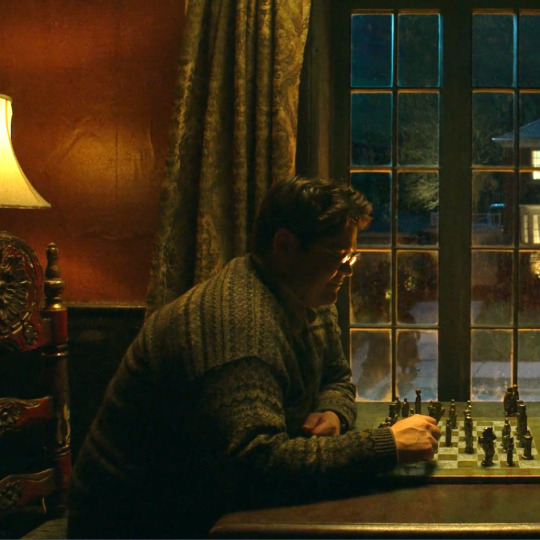
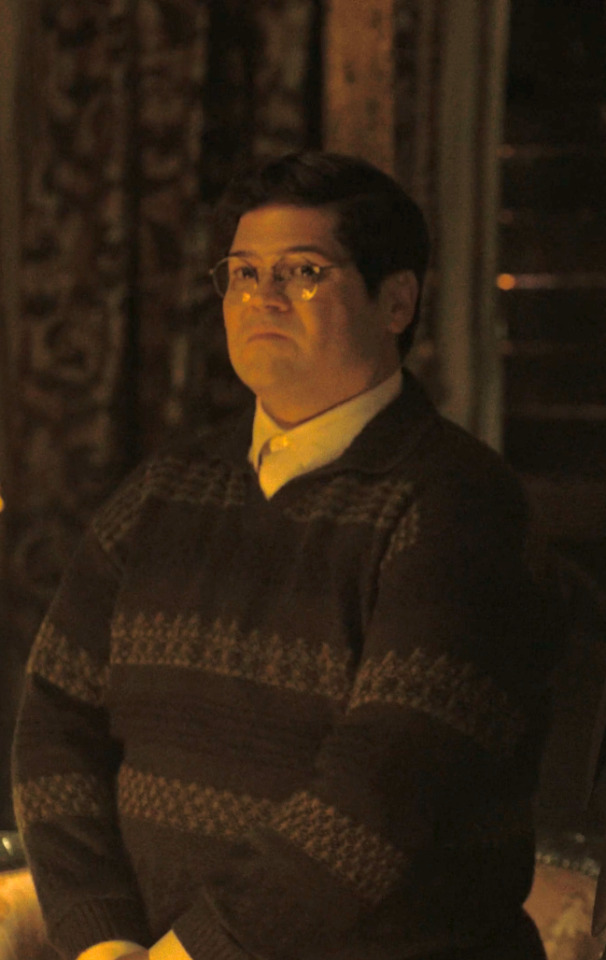
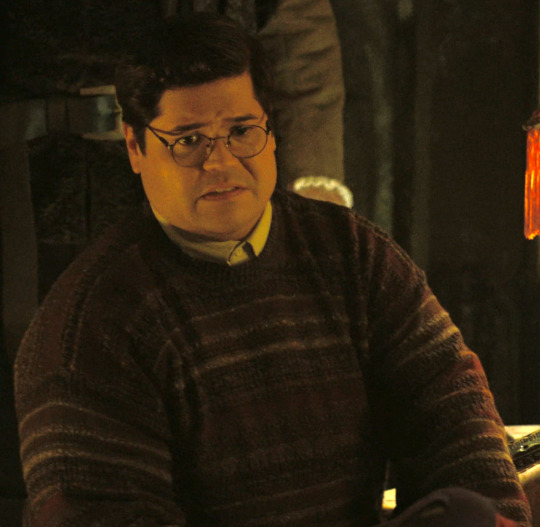
These sweaters are not cheap, either, at least not when of the quality he typically wears (many cheaper Fair Isle sweaters only feature the technique on the front or collar of the garment, with the rest of the garment being all one color). A well-made Fair Isle sweater can easily cost in the hundreds, and Guillermo has around half a dozen or so of them in the first season. This lends credence to my personal headcanon that Guillermo, who works for no pay and owes $1200 a month in rent, most likely gets a lot of his clothes by gift or by thrift--that is, they're presents from family members or he gets them heavily discounted at secondhand stores or websites.
Mosaic Knits
Mosaic knitting, like Fair Isle, is a technique for incorporating multiple colors into a single garment. In this technique, however, you only knit with one color per row. It is meant to be easier than other colorwork methods of knitting, and does not have floats (loose strands of leftover yarn on the back of the knitted work) the way Fair Isle does.
Mosaic knitting is great for creating colorful, repeating patterns, and can be done flat or in the round. Mosaic patterns can also be made to be reversible, due to the lack of floats, and the finished product is generally stretchier than the results of other techniques. (Source)
I also just really like the texture of mosaic knits? There's something about the way the threads fit together that scratches my brain pleasantly.
You can see an example of this style of sweater in 1x03 and 1x04, as well as throughout 1x09, when Guillermo is helping to plan the Orgy.

Fun fact: there's a goof in the editing of this episode! Throughout most of it, Guillermo is wearing this thick, crew-neck mosaic sweater. This is interspersed occasionally with images of him wearing a thinner brown Fair Isle v-neck pullover with a polo-style collar. This kind of switch-up is not uncommon, as talking heads meant to be filmed at a different time are often interspersed with in-the-moment action.
But when Guillermo bursts into the room toward the end of the episode and finds Jeremy losing his virginity with Constantine, he is wearing the mosaic sweater. However, when he steps out of the room and pulls the door closed behind him a second later, he is suddenly in the brown v-neck pullover from his talking head snippets.

(Thanks to @karofsky for inflicting this cursed knowledge upon me. <3)
Guillermo also wears this Fair Isle sweater in 1x03, and at the beginning of 1x10.
Guillermo wears one other sweater which, based on the texture and pattern, looks like it could be a mosaic knit:

This is the sweater he wears at the beginning of 1x04, when Laszlo asks his opinion about the witch skin hat and when Nandor is "flying" him around in front of the mirror.
Coogi Sweaters
These are the most elaborate and unique-looking sweaters Guillermo wears in the show.
Coogi is an Australian clothing brand originally founded in 1969 (then called Cuggi), known for its unusual textures, organic patterns, and bright colors. Egyptian designer Hazem Elsheltawi is the original creator of Coogi's unique fabrics, which have been inducted into the Smithsonian Cooper-Hewitt museum. For more facts and a brief timeline of the brand, check out this blog post by Filthy Rebena Vintage.

The distinctive Coogi style is achieved by combining several different knitting methods, including Fair Isle, Intarsia, ribbed and warp knitting, and stockinette and reverse stockinette knitting to create layers and textures that no one of the aforementioned methods could achieve on its own. The sources I found were conflicted on whether these sweaters are made by hand, or whether making them by hand would even be practical or feasible. For a thorough breakdown of a Coogi sweater and the various techniques involved, see this Reddit thread on r/MachineKnitting.
At first, I thought Guillermo only started wearing Coogi sweaters later on in the series, but upon closer inspection it appears he wears at least four Coogi or Coogi-style sweaters in the first season.
The first of these is in 1x02, an elaborately-patterned sweater in blues and reds that Guillermo wears to accompany Nandor to the City Council meeting (in what I like to call his Politician's Wife scene).

He wears this same sweater in 1x08 when he is assisting Nandor with studying for his citizenship test.
The second is the cardigan Guillermo wears in 1x06, 1x07, 1x08, and 1x10.

The third and fourth are also from 1x10, which is a very Coogi-heavy episode! Guillermo wears two black and white vertical striped sweaters that are very similar at the beginning and end of this episode.
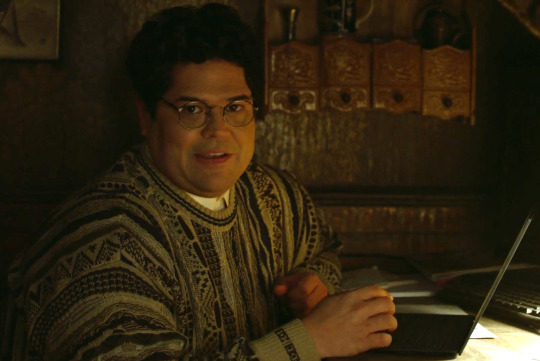
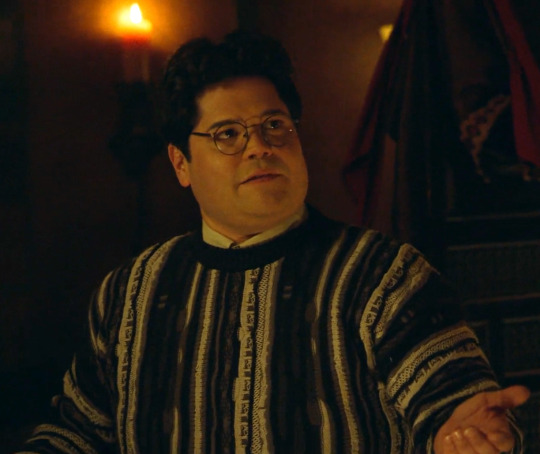
I know I said I was going to leave the character analysis for its own post later on, but I find the choice to use two very similar sweaters in a single episode so interesting, especially given that he wears a total of six different sweaters just in this episode alone! Looking at them side-by-side, it strikes me that though they're both black and white, the one he wears at the beginning of the episode is on balance more white, and the one at the end of the episode has far more black.
At the beginning of the episode, Guillermo is still (as far as he and we know) just a human familiar. By the end, he has this dark secret to contend with. Comparing these two looks, it's like he's literally begun to be embraced by the shadows he lives among, like they're not just something he aspires to but already a part of him that he's slowly discovering.
I feel as though I've also definitely seen that Coogi cardigan in other seasons as well, so I'm excited to see what parallels there are to be drawn when I start to look at when he wears specific sweaters across the seasons!
These sweaters gained and grew in popularity in the mid-90s and early 2000s as various hip hop and rap artists began wearing the brand and mentioning it in their lyrics. The first of these was The Notorious B.I.G., who mentioned the brand in not one but three different songs. The brand has also been mentioned in lyrics by Kanye West, Rick Ross, Tyga, ASAP Ferg, Christian hip hop duo Social Club, and MC Suffa of Hilltop Hoods, who owns a collection of Coogi sweaters. The brand is sometimes mistakenly called the Cosby sweater, however Bill Cosby never wore Coogi sweaters as the costume designer on The Cosby Show hated the sweaters and thought they were too tacky for Dr. Huxtable.
Though they faded in popularity in the late 2000s, the sweaters saw a resurgence around 2014. Their popularity has waned somewhat since, but Coogi sweaters still signal 80s and 90s counterculture coolness for many fashion aficionados. Coogi clothes are now billed as luxury goods, which makes sense as a single Coogi sweater bought brand new can cost between $400-$600. There are, however, many pre-loved and vintage Coogi sweaters out there, often available for under $100.
Affordable Options
As I mentioned above, high-quality knit sweaters can be damned expensive! But we can do as Guillermo almost certainly does, and embrace thrift shopping! I don't have specific links this time, as links become irrelevant quickly on thrift and consignment sites. I can, however, provide a few tips on how to get your hands on a nice, pre-owned sweater that will have you saying "my name is Guillermo de la Cruz" like you mean it.
Recommended Sites:
Depop
Etsy
ThredUp
eBay
When using any of the above, be sure to search for "Fair Isle sweater," "Mosaic sweater," "Coogi sweater," or just "Coogi" and narrow down by your sizes before you start to browse. Also always check the label and garment details to make sure you're getting a fair price! There are a lot of imitations of Coogi sweaters especially out there, and you might have better luck with those if your Coogi findings are on the sparse side (though I didn't encounter this issue when searching).
Some good search terms include "Protege sweater" or Canadian brands like "Tundra" and "Consensus." They all make nice sweaters in a Coogi-esque style, but should never be costing you anything near Coogi prices, as even a genuine Coogi sweater typically goes for under $75 on any of the above sites. I'd also recommend looking when sweaters are off season; they're going to be in much higher demand, and thus harder to find for a good price, in the fall and winter.
Focus on vintage sweaters from the 80s and 90s where possible, as those are going to give you the most Guillermo styles. For colors, look for patterns with a gray, brown, deep forest green, or muted/navy blue base. Reds should typically only be accents within the pattern, not the dominant color (unless you want to create your own unique vamp!Guillermo look).
Go forth and get cozy!


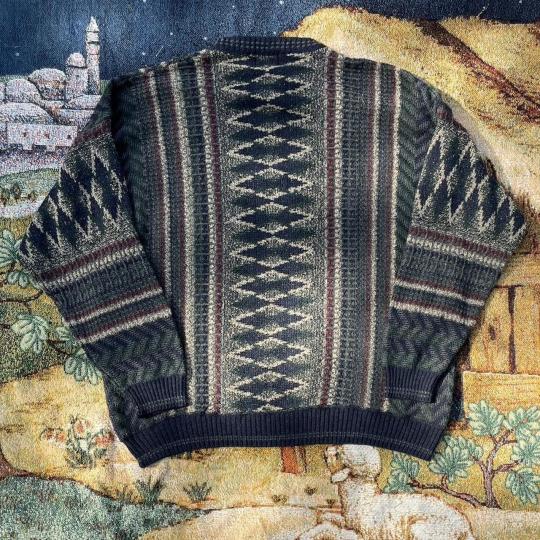
Note: The information about knitting in this post is the result of several weeks of research on hobbyist sites and video tutorials, but I am not a knitter. If I have gotten anything wrong or misunderstood anything about these techniques, please send me an ask! I'm always eager to learn more!
#wwdits#guillermo de la cruz#character costumes#fair isle#coogi#harvey guillén#fashion#plus size fashion#sustainable fashion#mosaic knitting
89 notes
·
View notes
Text
why is ming such an interesting character - a thoughtful essay originally posted in the my stand-in mdl comments section
By MDL user Liltsu (reposting with permission from OP, just added some gifs to illustrate OP's points) - original comment link
Probably an incoming unpopular opinion ahead (read with caution lol, disclaimer that I am not attempting to justifying Ming's wrongdoings to Joe, more so trying to understand for myself and anyone else why I find his character so interesting):

Am I the only one who doesn’t hate Ming, and wouldn’t consider it to be a sad ending if Ming and Joe ended up together? At least as of now, especially from what I’ve seen currently and how I can imagine the direction the rest of the series might take. Let me expand.
For context, I went into this drama not expecting very much, and felt extremely sceptical of the trope of the ‘stand-in’ it uses, because one of my pet peeves in romance dramas is the ‘transfer’ phenomenon. If you haven’t heard that term before, it’s basically a psychological term about how a person (let’s call them A) will ‘imprint’ on someone else (person B). So to have a ‘transfer’ regarding someone else, for example, would mean that person A might have liked a person in the past (person C), and then meet someone new (person B) who resembles that person (C) in some way, and purely because of that, person A starts to also like or believe that they genuinely like person B. The problem with transfers is that they typically are rooted in a person’s (A) unwillingness to let go of the past person, and don’t truly love/hate (whatever emotion it is) the new person (B). This drama, reverses that trope.

This will link to why I find Ming’s bond with Joe to be more genuine than I’ve seen be believed on here (just based on a few comments tbf). My theory is that, ironically, it was Tong all along that was Joe’s metaphorical stand-in from the start. Why? We see a short flashback of Ming going to the cinemas and seeing the ad/clip of ‘Tong’s’ back, doing a martial arts scene, but we only see his back. That very shot/scene is what made Ming feel entranced by Tong and motivated him to seek Tong out with his sister for an autograph. He even mentions it himself to Tong. However, I believe that the ‘back’ that Ming saw, was Joe’s and not Tong’s. Ming « fell in love » with Joe’s acting/aura/presence on the screen first, but mistook him for Tong who is the ‘known’ actor of the film he saw. So all along, his feelings for Tong are somewhat illusory, and obsessive. Tong, who in my opinion gets off of happily at the notion of someone being infatuated with him, simply strings Ming along (and uses him), as we’ve seen.
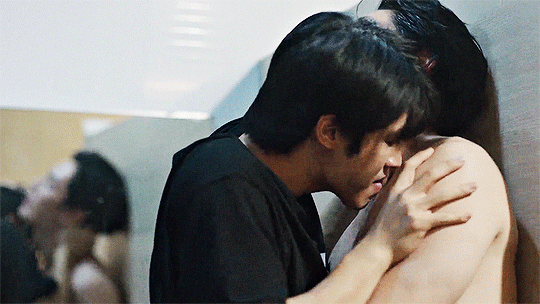
In my opinion, Tong represents the side of Ming that was raised in a classist, materialistic family that rather obsesses about ‘spectacle’, in a way that harms Ming in the long-term. That kind of lifestyle or way of life makes him petty, distrustful, overtly and unreasonably jealous, and aggressive. Behaviours that manifest very evidently when Ming sees Joe with Sol, but particularly in correlation to scenes in which his affinity for Tong has been strengthened (Tong only sharpens the conditioning Ming has been raised through, that of being sceptical and always needing things to go his way, and fuels this, either by being in his direct company or feeding him seeds of doubt indirectly). Tong represents attachment and obsession but not love. Particularly the scene in which Ming renders Joe unconscious and keeps him captive is the most blatant example of Tong’s influence, which brings out all of the qualities of Ming that reflect the wealthy and entitled background he is born from and still lives off from.

Ming’s interest in Joe is different in my opinion, and the series carefully points to this in a nuanced way. If my theory is correct about Ming having been drawn to Joe first, rather than Tong, and the feelings that were initially meant for Joe came to be directed toward Tong (and became twisted due to that fact), we can assume that Ming’s feelings for Joe are more…instinctual. They awaken something in Ming. And to me this is perfectly shown in their first interactions: Ming hugs Joe from behind, believing he is Tong, but if my guess turns out to be true, he subconsciously went toward Joe and embraced him with the original feelings that he felt at the cinema (when he truly ‘first’ saw him), rather than the other way around, which the series makes us believe at first glance. Then, in their interactions after, Ming is consciously reluctant to open up to Joe (showcasing the walls he has up, even toward Tong), but is still intuitively interested in Joe, wants to be around him, and cares about what he is up to. In my opinion, he sets unfair and unequal conditions in their relationship at first because of the self-défense mechanism he has kept up (someone with his background would find it difficult to trust and be vulnerable with someone else easily). This is why the most crucial interactions between Joe and Ming, in my view, are the scenes at Joe’s home. We see that Joe had said that Ming had fulfilled HIS dream to come back to a lit home and with someone welcoming you back warmly. I believe this is something Ming has long craved as well for himself, and Joe expressing this, and being the way he is, makes Ming feel safe and allows him to become more open, more intimate, more honest, more ‘himself’.
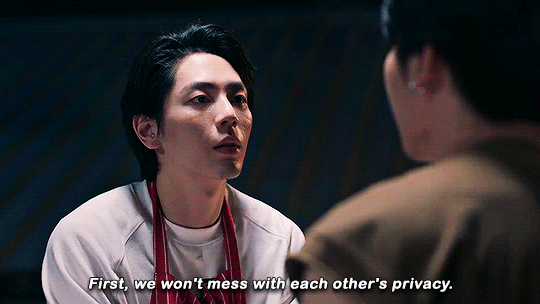
I feel that Ming struggles to fully understand these sides of him, and has even more difficulty communicating it to others (especially Joe), but that his gentler moments show indeed the equal, and dare i say, even ‘healthy’ potential of this couple. We see this from the last scene of this episode. Instead of Ming indulging in luxuries for someone of his status, or succumbing to some kind of greed, he has pertained to what he has truly desired all along in his heart: a warm home, where he can lead an honest and loving life with the person who sees him past his social persona of the rich, pampered, entitled and obsessive kid. This is symbolised by the fact that he has continued to live in Joe’s home, waiting for him for the last two years, which reflects his commitment and earnestness which he had gradually developed for Joe, even before.
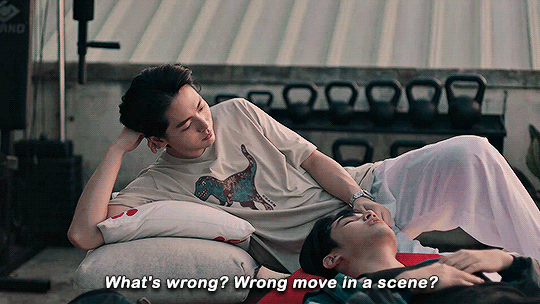
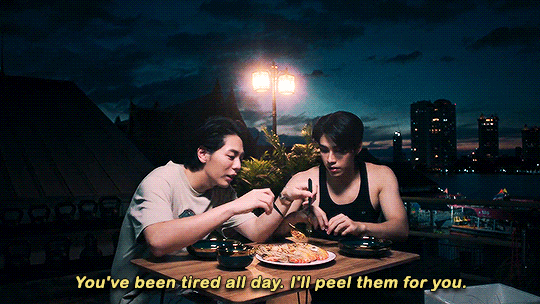
I think what people get (understandably) confused or feel betrayed by, is the scene in which Joe realises he has been a ‘stand-in’ for Tong by Ming, especially during sex (because this is somewhat what Ming consciously believes for himself too). For me, I saw it more so as, on one level, the revelation of what I just mentioned about Ming’s prior conscious intention (which evidently is form of betrayal to Joe), and on another level, it is a defining moment of transition, where Ming is still somewhat clinging on to Tong (because of the feelings he first felt for him at the cinema, which could really be Joe again), but also clinging still to what he knows and about his way of going about things (through manipulation and violence).
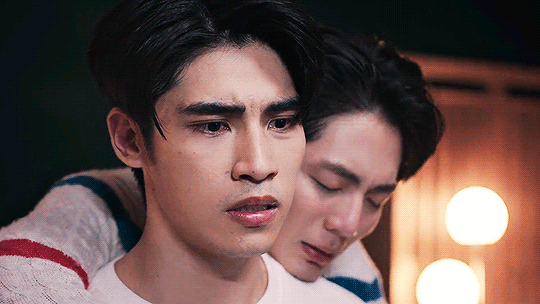
So a transition from that, into the growing feelings, appreciation, and warmth Ming did start to exhibit at Joe’s house (the symbol of vulnerable space). We see this through Ming buying the couple mugs with THEIR names (Ming and Joe), or the meaningful moments of genuine happiness that Ming feels in the simple, non judgemental moments between the two of them. This is something his sister comments about, that seeing Ming with Joe is surprisingly pleasant because it is the fist time in a very long time since she has seen Ming happy and so smiley (this is one of the biggest external piece of evidence to the idea that Ming’s « feelings » for Tong have a very different nature to his feelings for Joe). And we see this very clearly in the scene in which Joe bought a watch to Ming (and which I believe we see him promote now two years later on the poster he is). That scene is extremely significant because it shows the shift and differences of Ming alone with Joe compared to with Tong or how he is used to being. The watch is a gift from Joe, who believes it to be the « top » watch in terms of ‘quality’ and price, something we see Ming ALREADY HAS (and doesn’t have particular personal feelings toward). The top watch he has reflects his status, his wealthy background and the expectations on him by others and himself (to be considered societally the ‘best’, but in a rather vain way). However, Joe’s watch isn’t the top watch in a societal, classist sense, but it holds more value to Ming because it represents Joe’s sincerity and that matters more to him. The watch, which is typically a common symbol of time, also reflects, in my opinion, the difference in how Ming spends his time. By taking Joe’s watch and wearing it, his way of using time is also more personal and sincere, wanting to lead a life of authentic connection with someone on the same wavelength as you. In his act of taking of his old watch, which was the ‘top watch’, Ming leaves behind his old lifestyle, or at least takes on more step toward exiting it (the life of vanity and falsehoods). So all these signs of Ming’s genuine interest, endearment and feelings of care for Joe are sprinkled there from the beginning, and the series deliberately is setting a constraint between his potential for warmth and healthy sincerely with the baggage he still has from his past through Tong and his family (something he both feels and is to some extent very much controlled by).
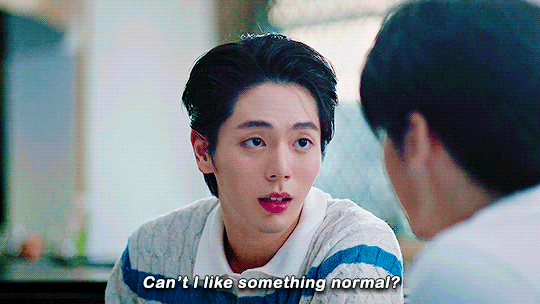
The series has really made me invested, and that has really been invigorating for me (as I binged the episodes today) because I haven’t really felt that as much with a lot of BL series lately - not that there aren’t don’t get me wrong, just that it feels like fewer have my engagement than usual. And to me, the series’ strength at this point (excluding the very good acting etc) is the writing, so I am very hopeful that for the parts of Ming that would require a form of redemption, or improvement, that the series would allow him to have that arc by the time that Joe and him supposedly get back together (if they do). In the case where my interpretation is close to the series’ intention, then i believe that although it doesn’t make the previous scenes justified, that it would be very much possible for Joe and Ming’s relationship to take on a healthier, more mature turn, where their relationship would become more patient, communicative and understanding, just like the interactions they shared in their own shared home.
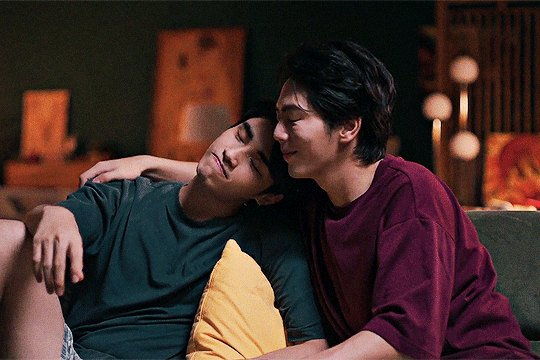
I’ll probably end my train of thought here, but would really like to hear if anyone disagrees or agrees with my opinions, would be happy to hear from anyone hihi. Thank you to those who read this whole e s s a y, i’m appreciative of that :).
143 notes
·
View notes
Text
dippers a cat person
mabel is a dog person.
originally i was inclined to say otherwise but here me out okay.
mabel seems like the crazy cat lady type and shes always doing the meow meow thing. BUT. shes so hyper and she loves physical touch and quality time. all traits of dogs. they need consistent exercise constant attention the love having a warm body to cuddle up to. cats yes but less so. cats sleep a lot they like to play but always and only their terms and more often than not in my experience cats are flighty and angry. they will not go play in the yard with you like a dog. they do not like being mutchered and dressed up. dogs will let mabel play dress up with them.
i love the idea of dipper with a retriever lab just on a stroll playing fetch but it doesn’t fit his personality well. at least not in canon at age 12. he needs a cat. hes quiet and reserved. introverted. he would rather sit in his room with some quiet lofi and study. he’s not super active. he’s not meant for an animal who will be all over him all the time demanding play and demanding attention. he needs a pet he can just enjoy the company of. the quiet purring soothing him but not smothering him. occasionally at his feet or in his lap but not nagging or obsessive. he would get so tired of a dog that begs for everything. cats dont beg.
i go either way with grunkles
stan would have a big ass gaurd dog. something to pair with his brass knuckles when hes listing threats. an animal he can sit with by the fire and warch ducktective. an animal he can hunt with. feed old leftovers. an animal he can nurture and care for and receive unconditional love and loyalty from in return. Like the old man and the beast in sandlot. alternatively I can see him not wanting the effort of a dog. He wants an animal that he can like. Enjoy having around, but was just leave him alone because he’s a grumpy old man. He’s not cuddly and affectionate. At least that way he’s kinda sinister like in that criminal way and that’s very cat thing like the cat lady and apply it to a grumpy old man and you would get him.
ford… well cats knock shit over a lot so it wouldn’t work in his lab realistically but i love the idea of him working and the cat just napping in the corner. like dipper he’s very solitary and gets caught up in work/research for days and will forget to give the animal sufficient attention and play. cats dgaf about that though. he stays hold up in his lab or his room or his library/study or whatever he doesn’t go outside so he couldn’t have a dog who needs to go on walks every day. alternatively the idea of him saying yes I’m going for a stroll in the woods because I need exercise to stay healthy to fight monsters as could also be very possible in which case he would go on a stroll with the dog I also like the idea of him having the sandlot guard dog type relationship, so you know. 
#gravity falls#dipper pines#mabel pines#grunkle stan#grunkle ford#standford pines#stanley pines#stan pines#great uncle ford#great uncle stan#mystery twins#pines family#pines twins
52 notes
·
View notes
Text
How are we meant to look at operas, anyway? (and what are they?)
Operas are my favorite art form of them all. This is because I think they are "just really neato" and "the most interesting to study". However, if you were to go around and ask what Defines an opera? Nobody would have a concrete and true answer to the question. They aren’t ‘sung through stage works’ because many operas aren’t sung through and non-operas that are. They have no specific orchestra or singing requirements. Even determining them on a cultural basis doesn’t entirely fit. I actually think ‘art’ is too loose and philosophical a term for what they are either. (I mean, yes, they are art. But how are they so?)
I think that while there’s no concrete definition for what an opera actually is, there ARE certain sets of… rules (for lack of a better word) that dictate how operas Are and what we should do when Seeing them. Funnily enough, the most complete rules I’ve seen for operas I found in an essay that has nothing to do with operas at all- “Monster Culture: Seven Theses” by Jeffrey Jerome Cohen. My rules for How To Look At Operas are heavily derived from that essay, interpreted in ways to best fit the art form.
My Rules of Opera (with apologies to Mr. Cohen):
1. The Opera’s Body is a Cultural Body.

Operas are sociological and anthropological records that entail a gap in time between their composition and their performance. They contain as many perspectives as there are people aware of them. Every time you watch an opera, you are negotiating with something or someone else. And these records are always being added onto- no opera is ever truly ‘complete’.
Operas cannot truly be escapist entertainment because they directly reflect societal problems in both the composer’s time and ours. La Traviata’s main conflict- the way sex workers are demonized and unsupported among ‘polite society’ and how societal expectations and the pressure to conform destroys lives- is something that existed in Verdi’s time, and our own. La Traviata is about the sex workers of today who can’t find work anywhere. It is also about how Giuseppe Verdi’s wife was poorly-treated by the people around her for having been sexually active before their marriage. It is also about the gap between these two events, and how one thing became (or still is) another.
An opera production is not a recreation. No matter how ‘original production accurate’ they claim to be, they are always a negotiation. There is no such thing as accuracy, as civic law. Once one is freed of the expectation of ‘canon’ or ‘what ought to be’ in an opera, one can deal with these creatures more handily.
2. The Opera Always Escapes.

No matter how many times Don Giovanni is dragged off to hell at the end of Mozart’s opera of the same name, he always reappears again in a fresh new staging. He never stays down there. Maybe the gates to Hell are looser than we imagine- or, more likely, this is because he represents something that cannot be defeated. What does the character represent? Abuse, sexual violence, power (with class, with gender, with religion); grief, loss, death. None of these things will go away in our lifetimes or the next, and so Don Giovanni as an opera remains relevant.
In fact, there are no ‘irrelevant’ operas in the standard canon as we know them. Any irrelevant operas that did exist are long gone because there would be no reason to revive them. Even operas that have ‘aged poorly’, like Turandot, confront us with why they’ve poorly aged and force us to reckon with some part of our current world. We react to them in some way and therefore they are worth further looking into.
I call this the “All Dogs go to Heaven” theorem because it doesn’t argue that all operas adhere to the same standard of quality, or are even written with good intentions in mind- but it does argue that they all are worth studying and experiencing. And any opera, as long as a copy of its score and libretto exists, can come back from the dead. So just like the movie, not all of them stay there.
3. The Opera is the Harbinger of Category Crisis.

One of the most common ways to explain away what an opera is, against a musical or a straight play, is to claim that operas are sung through while musicals feature spoken dialogue. Respectfully, this is wrong and insane. Two of the most famous operas of all- Carmen and The Magic Flute- feature extensive spoken dialogue, while Hamilton and Cats (both sung through) are musicals. The notion of operas having specific orchestral or voice requirements isn’t quite true, either- each era of opera, and each opera, is a separate animal.
Is Porgy and Bess an opera, or is it a musical? It features many musical qualities with the latter, and was written by musical-writers - yet it is referred to as an opera. Sometimes it is both. Maybe at some point it could also be neither.
Operas do not participate in the general categorization of their Western theatrical siblings. Musical, straight play, ballet- these art forms are immediately distinguishable as themselves. (Note that musicals, despite having a lot of variety, do not have as wild a diversity as operas do owing to their relative youth as an artform.) But an opera can be all three of these and still be an opera. Not only that but there’s so many ways for operas to be- chamber opera, verismo, singspiel, music drama, opera-in-jazz. The opera may borrow from any art, at any time. Its incorporeal form grants it the ability to shift. This is both opera’s great weakness and its greatest boon of all, maybe its most defining operative feature of them all- it can be anything you want it to be.
4. The Opera Dwells at the Gates of Difference.

With their characteristic exaggeration and other oddities, operas are immediately recognized as depicting a world that isn’t quite our own. It’s a world rooted in our own (see point 1) but it isn’t our world. We don’t sing, or gesticulate to that degree, or stab people at the drop of a hat to solve a problem. As much as opera tries to be ‘like us’, it never is entirely so, in a sort of Frankenstein way.
In this way it is no wonder that all operas focus around difference- from each other, from society, from ourselves. Sometimes this difference is explicit- the ‘othered’, shunned main characters characteristic of the Verdi operas, as in Rigoletto and La Forza del Destino- and sometimes it is more implicit (Tamino and Calaf being strangers to the people around them, Figaro’s position of a lowly barber among Counts and Dons, even Orpheus out of place in the Underworld). The opera seeks to represent the Other. Oftentimes the opera itself is the other. We are all made to learn a new set of social rules when we come to the opera- this equalizes us as an audience, and paradoxically renders us the Other. Opera is about othering and being othered. This is not necessarily good, or bad- it is just a neutral feature.
5. The Opera Polices the Borders of the Possible.

Every opera begins with- and then revolves around- some kind of transgression. Moral (Don Giovanni slays the Commendatore), cultural (Pinkerton marries Cio-Cio San), societal (Alfredo falls for the courtesan Violetta). The way the opera’s narrative body reacts to this transgression is what will come to define that opera’s theme and what it stands for. Even in the most comic operas, the inciting incident is always a transgression; it is up to the interpreter to detect what the transgression actually is, and from this point the opera emerges all at once like a cracked egg.
Die Meistersinger Von Nurnberg is an interesting case study in transgression. The initial transgression may be seen as Walther joining the Meistersinger contest to win the hand of Eva- he is, after all, not initially a singer, and an intruder on the world of the (educated, cliquey) Meistersingers. But this is not true. Walther initially disrupts status quo when he boldly joins them but he doesn’t stay that way- he is a literal knight in shining armor; masculine and chivalrous, the exact image of how men ‘ought’ to be. Beckmesser, the clerk of the Meistersingers, is consistently depicted as an Other, the nitwit among geniuses; he is effeminate and overconfident, we laugh at his attempts at music making. It is Beckmesser entering the contest himself as a competitor to Walther that is the true transgression in the opera, and the opera surmises this as a bad thing that must be punished through public humiliation and further exclusion. While there is no proof that Wagner wrote Beckmesser to be explicitly antisemitic, the character appears to subconsciously reflect many of Wagner’s antisemitic talking points, adding a particularly cruel underbelly to the way the opera sees the transgression of Beckmesser’s inclusion.
6. Fear of the Opera is Really a Kind of Desire.

Operas are marked by multiple features: Their otherness, their transgressions, their propensity to shift. These all give operas a certain other quality: They are a vehicle for catharsis. The fact that opera is so physically demanding adds to this- an opera is a workout in which emotions about a certain endless topic can be expressed. Salome is terrifying, but through her we can express rage and pure obsession that otherwise would have no place in society. This is also where the falsehood of opera as escapism takes root: When the opera is not given the space to threaten, its catharsis is cauterized into fantasy.
Opera is a space where we can play- already something rare in adulthood- and through the opera we are allowed to play with terror (something even rarer). It is an abstract liminal location only maybe rivaled by a rollercoaster, a playroom, or a shrink’s couch. This sheer radical expression of emotion makes it also easily-mocked by a popular culture unfamiliar with it. I suspect this is because, really deep down, operas are envied. They are so upfront, so passionate, so heartbreakingly sincere that they make those who laugh at art seem small, laughable. But the art form carries on, being unapologetically itself because it cannot be anything else.
7. The Opera Stands At The Threshold… of Becoming.

What Cohen writes here in the original essay is maybe my favorite paragraph about literary analysis ever written so I’m just going to leave it here in its entirety:

Why do we love opera? What are we meant to do with them, and why are they the way they are? We come to the opera to find ourselves. The rest is just postscript.
#opera tag#i wrote this in the middle of a rehearsal last week and then worried it was cringe. and then was like Ahhhhh fuckit#rambles#dramaturgy
60 notes
·
View notes
Note
I've heard that Azula was meant to be male originally. I wonder how different the writing would be for the character and how different the fans would react to it. I am glad that they made Azula female tho.
I remember hearing that male Azula was also supposed to be the older sibling, which does change the story quite a bit. It makes Ozai's favoritism into a simple issue of succession. Male!Azula would be naturally favored because he would be the crown prince. Zuko would be raised to be subservient to his younger brother and that would be considered normal. Even Zuko being sent on a quest to find the Avatar becomes much more reasonable from that perspective as a practicality. Historically, second sons often went on those kinds of quests because it gave them something to do that wasn't "usurp my older brother for the throne."
Ozai would be even more aware that this was a issue, since he himself usurped his older brother. Actually, now that I think of it, it's really rather odd that Iroh, as crown prince, was the one out campaigning while Ozai stayed home, and that gave him an opportunity to stage a coup against his brother. A politically savvy Azulon would have sent Ozai out to man the siege of Ba Sing Se while Iroh was at home preparing to inherit the throne.
As for how fans would receive Zuko's older brother? I know a lot of people might argue that male characters are more easily forgiven than their female counterparts, and I have no doubt that a male version of Azula would have people ready to excuse his every move (see the inexplicable fandom that has sprung up around the likes of Billy Hargrove), but I also think the ways in which he would be excused would be vastly different.
Because with Azula there's a lot of "oh, she didn't really mean it," especially when it comes to the way she treats her brother. This idea that she actually really loves him, she just doesn't know how to show it, or twisting the things she does and says to him in canon so that they're actually proof of her love. I've been thinking about this a lot in terms of people saying they want to see Azula be "humanized," and what they usually mean is that they want to see her given redeeming qualities. Which to me reeks of a misogynistic double standard because most male characters aren't required to show kindness or be really loving deep down to be recognized as human. Being cruel and arrogant and sadistic are also human traits, and women are just as capable of these things as men.
I also think that because Azula is female and Zuko is male, there's a certain perception that she can't hurt him that much, either physically or emotionally. And the first one can be dismissed because the show takes place in a world where bending eliminates most differences related to physical strength. The second one is just wrong and relies on misogynistic beliefs about boys being less emotionally vulnerable than girls.
I do think that the Ursa blame would still be present if Azula were male, and possibly worse, because there would be that Freudian current about how Ursa damaged her son by not being the perfect madonna figure.
If Male!Azula were still the younger sibling, I think it would flatten the character in a way because it makes his cruelty and resentment of Zuko about envy for the throne. One of the most interesting things about Azula is that the fact that she is younger and girl makes her cruelty towards her older brother less expected, and more personal. And it takes something away from the character to try and excuse it away or soften it.
152 notes
·
View notes
Text
Copy, and then Paste! : A Post About Introjection
You know it—the title is based off the Ctrl C and Ctrl V function from computers, but did you know we have our own version too?
Introjection is more than just mimicry or replicating something though, it apparently plays a far more important role than you'd initially thought. Want to know the answer? Let's check it out then! (not a clickbait)
Okay google, what is: to introject
Out of 1253 results, here is the recommended definition,
"Introjection occurs when a person internalizes the ideas or voices of other people" from Therapist Development Center
From the related result, here are top 3 examples:
- When you internalize the idea of "crying is for the weak"
- When you believe that you're not good enough
- "I must dress pretty so i am socially accepted"
You can introject many sorts of things such as behaviors, mindsets, beliefs, traits, concepts or even feelings.
Articles on: How introjection happens
Well, it is a very complex process on how introjection happens, or why. But this search engine (me) will try to explain the whole concept to you in a simplified manner!
We have started to introject many things ever since a child, the world is difficult on its own to learn from scratch, which is why taking in qualities and behaviors from what we expose ourselves to the most shapes how we navigate the world.
Call it a framework to work with,, it is used to learn manners, or understand how to respond to a certain situation by observing, then, these values are internalized, importantly shaping us as we grow older. Though, introjection doesn't understand good or bad qualities as they're seen as "the truth" to one's mind, therefore it's possible to introject literally anything.
It can also function as a defense mechanism, where we adopt these values and internalize them in order to cope, or to repeat similar tactics that proved to be successful for the previous person. For example, if you were bullied, bullying back will mitigate the hurt you could receive in the future. This generally represents fictives and persecutors respectively, though varies for each person.
Fictive.. Factive.. What is that, Siri??
There are many kinds of introjects.. they can be based from fictional medias, real people, or even concepts like art or songs. But what the??
Easy now, sure the amount of introject kinds could throw anyone off, but the concept still stands true, though it gets trickier when it comes to other introjected concepts such as OCtives or Songtives, which i will explain too.
Thing is, what will help you understand many different kinds of them existing, is envisioning that introjection operates in a spectrum. Thats right, they are on a scale.
The idea is that introjection exists in a continuum. Just like how alters have varying degrees of development (a shard, or fragment), this scale is not meant to simplify or categorize things in its literal sense, but to help visualize and understand the level of complexities.
The level of complexity of a scale lies at what it/you introjected:
Lvl 1: Introjection
- the most basic forms can start from traits, ideas, or concepts.
Example: Alters that formed off songs, art, thoughts, and even feelings.
Lvl 2: Internalization
- then getting to more fledged values like behaviors, life views.
Example: Persecutors who had internalized negative attitudes from abusers.
Lvl 3: Identification
- and then lastly, when you identify the qualities of a specific person.
Example: General Introjects, Fictives, Factives. (identification varies in intensity)
Sometimes, these introjected qualities are absorbed by multiple alters or by oneself. If it does not get absorbed to a pre-existing part, a new alter will be created to contain these qualities that it has internalized instead.
An introject possessing multiple sources from different aspects is also possible due to this process.
(these three terms are originally interchangeable as they are under an umbrella of introjection, but i prefer to use them to represent each levels)
There's no result on the internet..
"What bests explains multiple introjects of the same source? What's with source separation? What about the memories that comes with said source?" Might be the search history in your phone right now, It's okay to stop searching, your answers are right under these fingertips!
Duplication of sources
When it comes to multiple parts of the same or similar source, it can be due to reasons like current hyperfixation or resonating with the qualities of said media. It can as be simple as wanting to have the same qualities from the media, too. Lastly, comorbids like autism and BPD plays a factor on how often you will introject.
Even duplicates will not act the same as the other one, which means each can introject different things from the same source, in different intensity or variation or alternative versions of source.
Additionally, being polyfragmented increases the amount of fragments/alters that could form, thus contributing to higher chances of having duplicates.
Source separating
When one introjected the qualities of a person/media, there might be a chance they identify as person/media due to it. The idea is that when one associates these qualities directly to the person, which then has a feedback loop where because the specific qualities are present, means they are that person.
Continuing from the example of bullying to not get bullied, they might see themselves just like the bully from the past due internalizing its behavior, in general this is equivalent to identification. Any negative or positive qualities can be introjected that later grow to identification.
The notion of needing to source separate is not something that have to be forced upon immediately. As it should be a transient process where one has to detach from the current sense of identity with one that is original.
No one can be 100% free from introjection, so source separation would mean minimizing the intensity of identification while developing a more whole sense of true self.
Being attached to a source in some level can be a positive outcome to implement, especially if it reinforces positive emotions or memories. As long it is not causing harm to anyone, since sometimes the urge to become the source or convincing of being one can be destructive.
Source memories
Remember something that had happened to you, but never happened to the body? It doesn't mean the memory itself is entirely fake, it is more to abstract context like how dreams manifests according to how you feel on a specific situation.
Just like dreams, the whole accident may never have happened in reality, but it is reenacting what had happened in the past with its own version/remake.
This happens when the true event is too much to take in or remember. When you cannot remember what truly happened, the somatic and emotional aspects to the trauma is still intact. Which contributes to why these fake memories aren't entirely fake.
Its good to take note that having a memory of going through an event, that doesn't happen bodily, never means you do understand the true experience of such event. It's only the impressions and assumptions of it.
With that being said, you can understand what your source memories are trying to convey by matching up similarities in your current life, or uncover how you feel or think of the event. Then, you can start healing whatever was left unresolved.
A scroll to the end of the web
Basically to reiterate things, we do copy and paste people's qualities for a living. But, not as a mere function like how computers implemented it.
Don't forget to consider who you will be friends with and how it'll impact you socially, and double-check whether you have adopted someone's essence that doesn't serve a meaningful purpose for you. You do become what you are exposed to, just like how you are what you eat.
Feel free to let us know your introject experiences, it could help validate someone else's experience, too!
- j & chaos
#did#actually did#did community#did osdd#did system#dissociative identity disorder#sysblr#plural#system stuff#jeducates
55 notes
·
View notes
Text

A reworked illustration for my patriarch fashion headcanons. Click for better quality and as always, headcanons under the cut.
Patriarchs (featuring Thurfian and Lamiov)
With Patriarchs we see the appearance of long jackets, wide lapels and tall structured collars (attached to the outfit separately). The most prominent difference for ruling patriarchs is that the outerwrap robe fastens with two twin knots rather than one.
The jackets are both long-sleeved and sleeveless depending on the intricacy of the undergarments and the wearer’s desire to show them off.
Patriarchs wear distinctive headpieces (will cover in another post) and conform to the traditional long hairstyles. The separately attached collars are modified in the back to better allow for these styles. These collars were originally meant to demonstrate proper posture and fit best when the wearer was standing or sitting upright. Their rigidity and restrictiveness has decreased with time but they still serve to highlight the wearer’s stance.
For Patriarchs the top of the white underwear robe is visible above the underrobe collar – normally underwear garments are supposed to be concealed but these robes were given tall necklines to prevent chafing to the neck from the structured collars worn on top. Because of this function they were made from fine silk. Eventually they became a status symbol (both because of the expensive material used and the fact that it was used in combination with structured collars) and began to be worn more visibly.
The overskirt, coming in several variations, is another characteristic item. Being the most traditional element of the patriarchs’ ensemble, it’s become obscure in other ranks and distinctive as a result. The pleating is meant to demonstrate an abundance of fabric, often embroidered, and its only use is for layering and decoration rather than practical purposes.
Somewhat counterintuitively, Patriarch robes have less lavish lower hems (absent the usual flaring cut) to allow for ease of movement and compensate for the extra weight added by the jacket length, overskirt and other weighty decorative elements and accessories.
In terms of curiosities, the Stybla are an interesting case both because their Patriarch is allowed to wear ruling family regalia despite not being one of the nine and because they preserve some older elements in their garments from the time they were the only ruling family. Like the hanging gold pin style of displaying their family crest.
All in all, cuts, accessories and colors vary depending on the wearer’s preference and current fashions but most patriarchs conform at least partially to established traditions.
#thrawn#thrawn ascendancy#thrawn books#thurfian#mitth'urf'ianico#lamiov#chiss#chiss ascendancy#chiss art#chiss headcanons#my art
186 notes
·
View notes
Text
Sorry to keep dragging Doctor Who into this, but posting Doctor Who/Mononoke theory here is going to baffle far fewer people than would posting it on my main blog...
It's somewhat plausible that the Medicine Seller and the Doctor really are similar beings on a cosmic scale. Both are dedicated to serving others; both are wanderers; both have no name other than a title that associates them with medicine. ("Medicine," by the way, is a term used not only for the "Elixir of Wisdom" produced in the Eight Trigram furnace, but also for the teachings of the Buddha, who is sometimes referred to as the "Great Physician").
Both the Doctor and the Medicine Seller maintain these core qualities regardless of whether or not other characteristics change, suggesting that a single cosmic force guides what they are. For the Medicine Seller, we know this to be true.
It's possible to label both of these beings as bodhisattva: agents of a higher wisdom who incarnate to connect with people in the physical realm and guide them toward wisdom or salvation - that is, back toward their central self.
For the Medicine Seller, this central self is the original state, the crucible of the Golden Elixir, the Tao, the Buddha, the dharma... whatever label you give it. (Given the amalgamation of Buddhism, Taoism, etc. in Japanese culture, and for many other reasons I won't get into right now, I think it's safe to say these ideas are all pretty much equivalent.)
For the Doctor, it's just... the Doctor, the numinous self that dictates the common elements of all the Doctors: primarily, courage and compassion (also both key in Buddhism). This is almost explicit in the Twelfth Doctor's final words before he regenerates: "Doctor, I let you go." He identifies "the Doctor" as a "self" outside his own.
If you're familiar with classic Doctor Who, you'll also have seen some strongly indicated connections there between the Doctor and Buddhism, including a story made up of two separate serials ("Kinda" and "Snakedance"), in which the Doctor battles a snakelike beast called the Mara. Not only do both of these stories invoke multiple concepts taken directly from Zen Buddhism, but the Mara itself is named after the Buddhist devil. Not every Doctor Who writer has endorsed this idea, obviously, but it's interesting that the Doctor fits into the role of a Buddhist savior so convincingly that a practicing Buddhist ("Kinda" and "Snakedance"s screenwriter) cast the Fifth Doctor in that role.
All that said (and I got way more into that than I meant to), if the Doctor and the Medicine Seller are basically the same type of being, connected to the same cosmic concepts, including the one that governs their multitude of permutations - then the possible incarnations of the Doctor may be capped at the same number as the Medicine Seller's: 64.
(For those who never made it into Thirteen's era, it established that the Doctor was never capped at the twelve-regeneration limit, and may in fact have an infinite number of regenerations. They were also first found at an interdimensional gateway of sorts, which is interesti-- Anyway, I'm no fan of this newest contortion of Doctor Who's lore, but since it fits into my theory I'm mentioning it anyway. 😛)
#mononoke 2007#mononoke#mononoke spoilers#doctor who#anyway who thinks I should send this to Nakamura-san and the BBC and annoy them both
47 notes
·
View notes